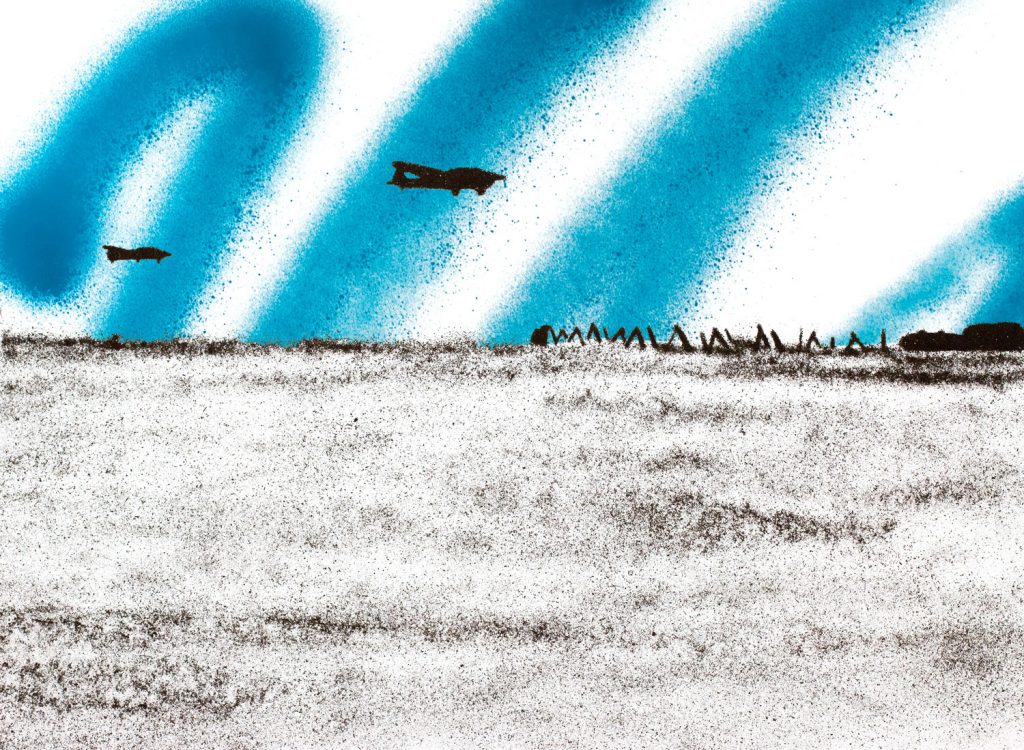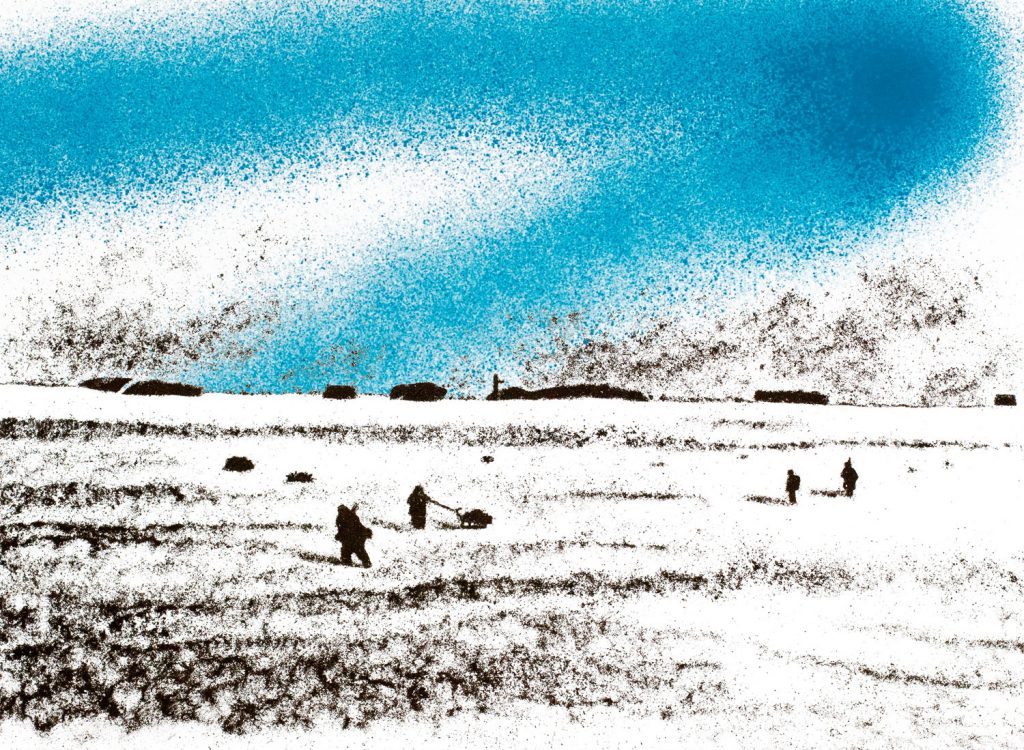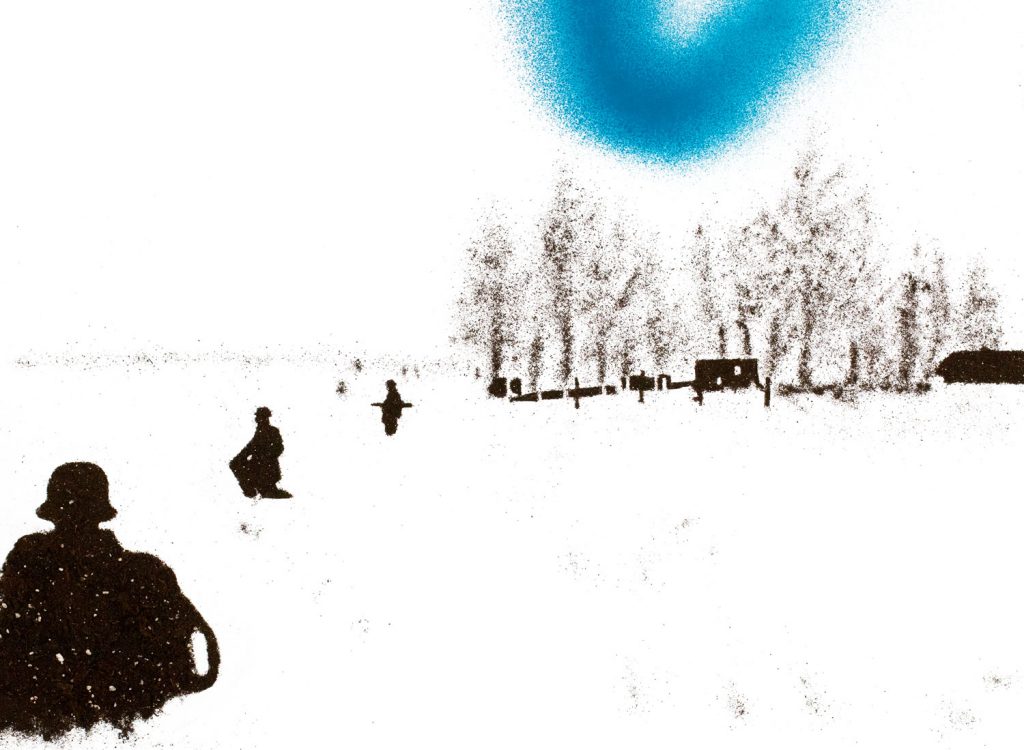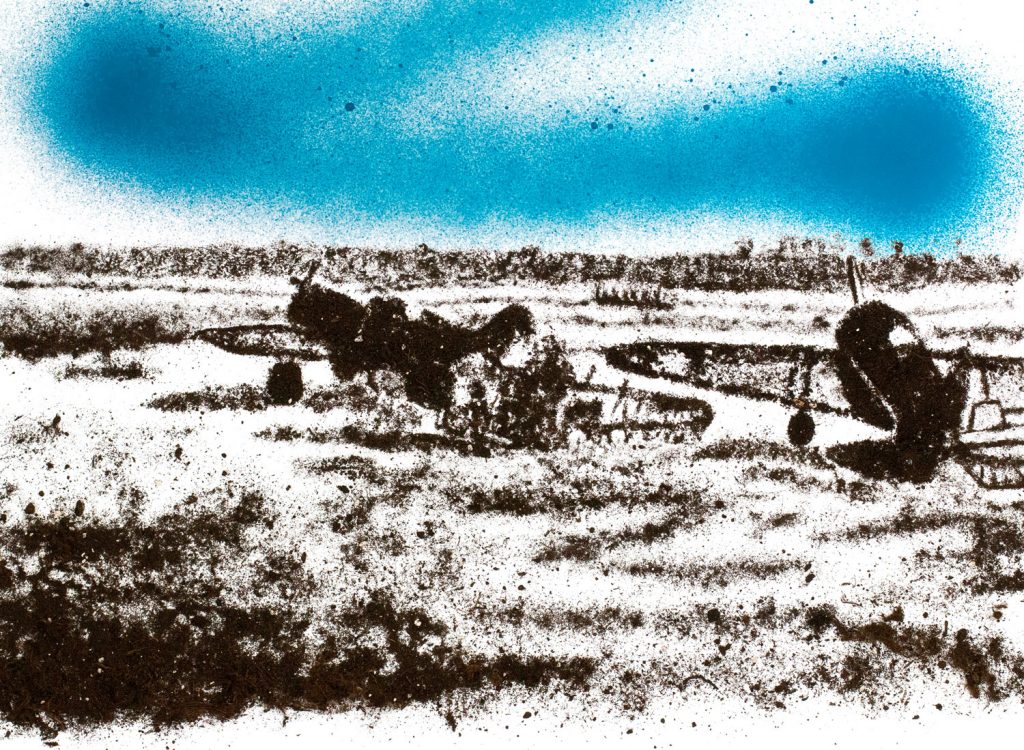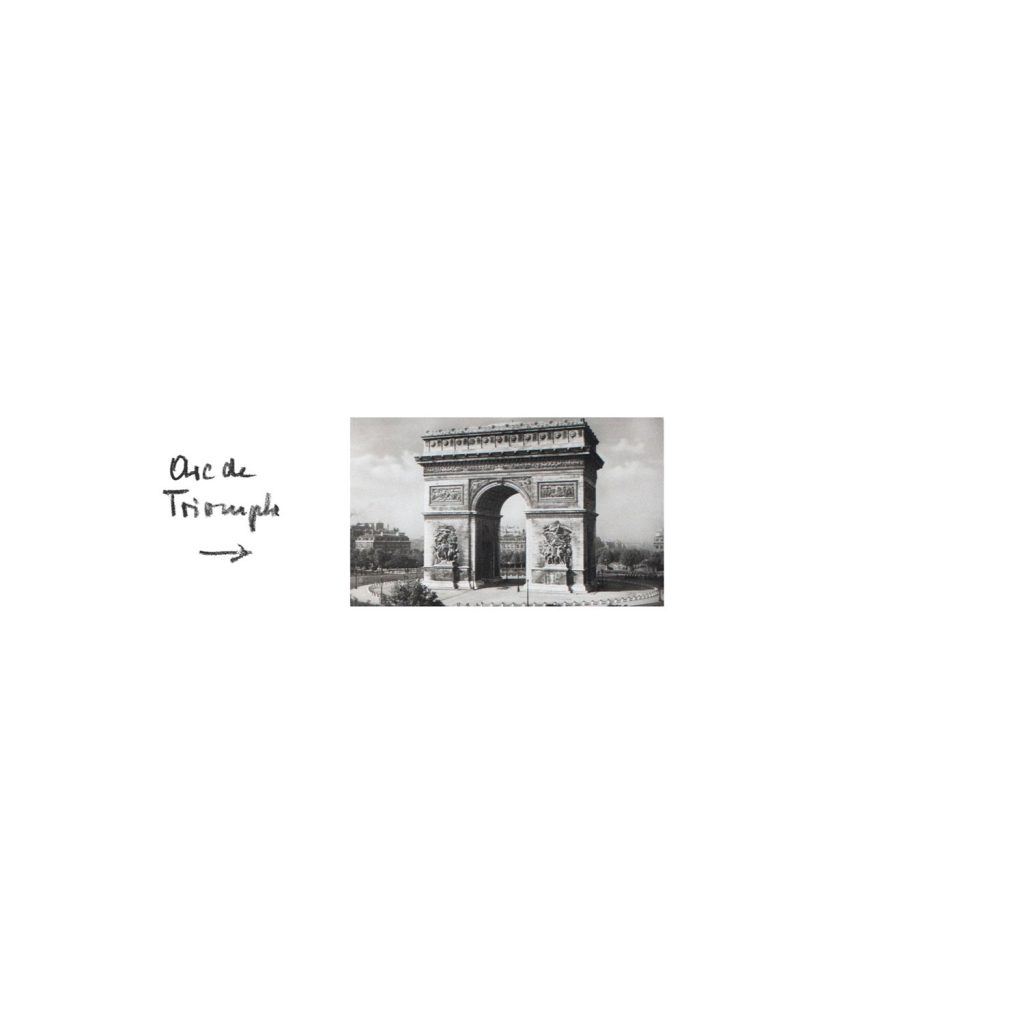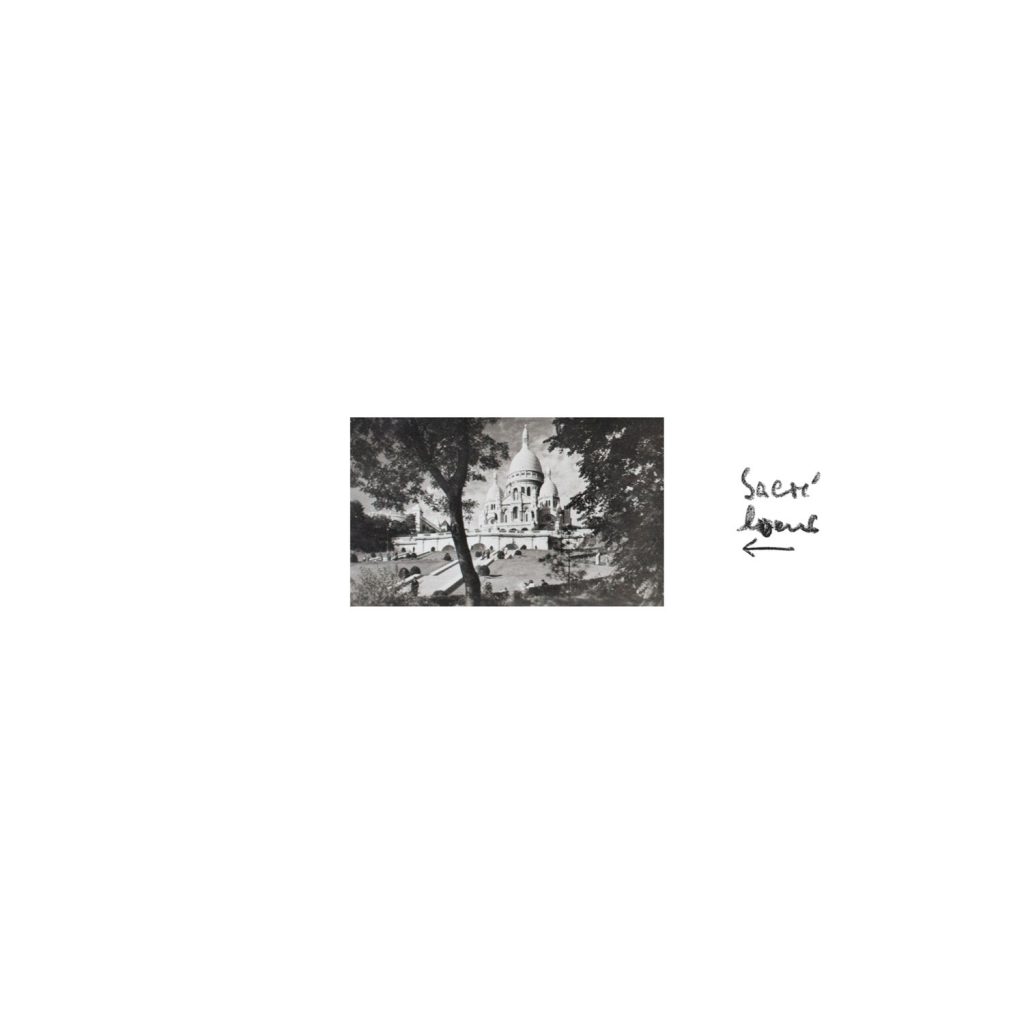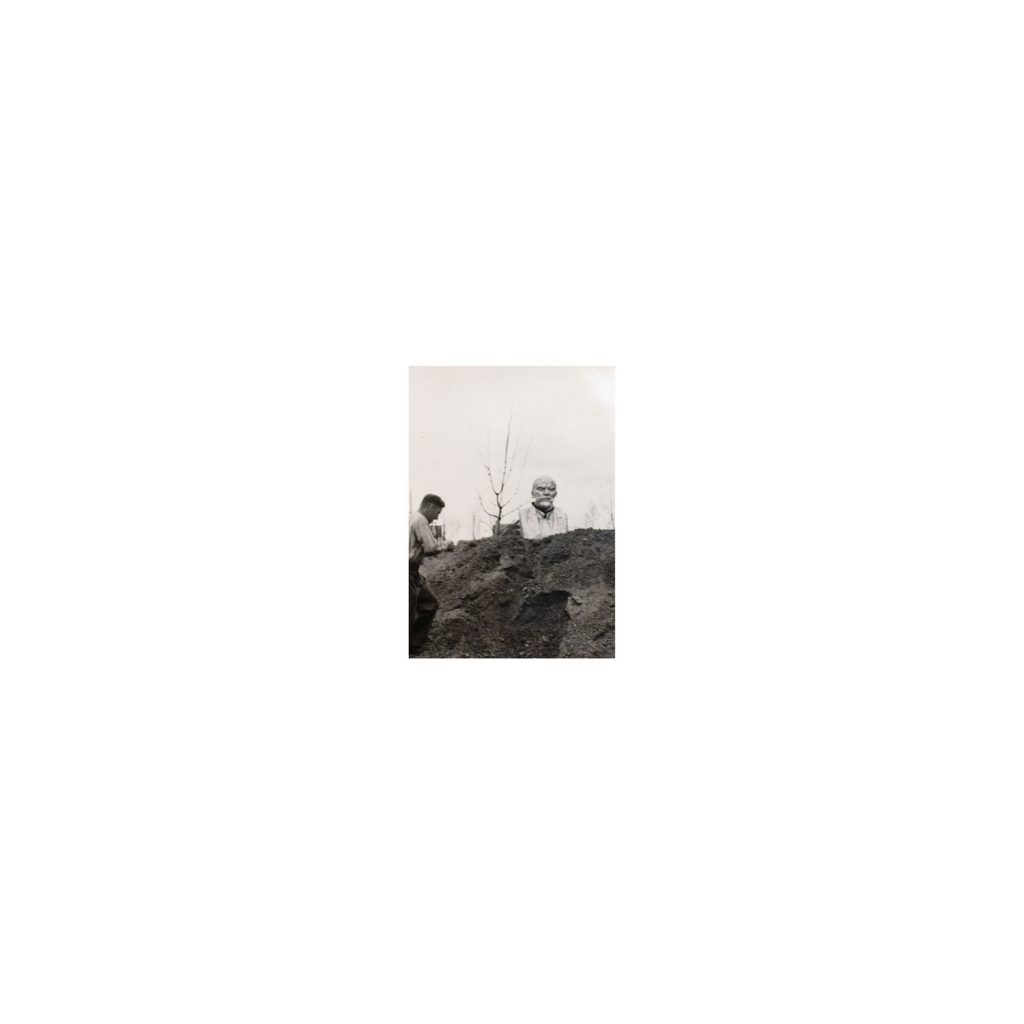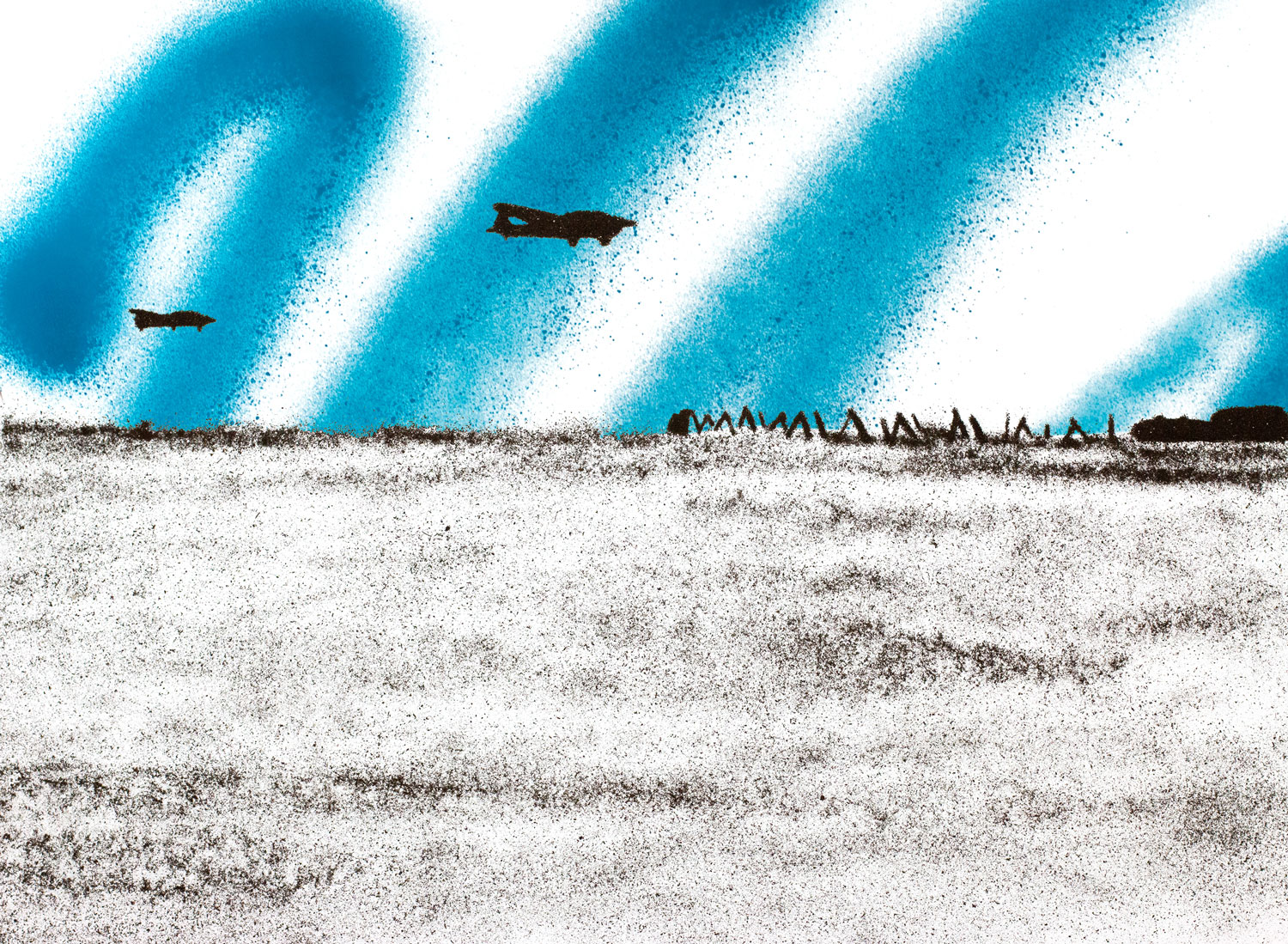This project is a reconstruction based on the family album of a Wehrmacht soldier aiming to research the notion of perpetrator’s gaze.
Last autumn we stumbled upon an extensive family archive, which used to belong to a Wehrmacht soldier who served in the Luftwaffe during WWII. Literally, every historical event from a school history textbook and every occupied country was there, meticulously tagged. Although there exist numerous similar private archives, this particular one has a very specific visual pattern in depicting events and places. Firstly, there are very few traces of war atrocities. And secondly, Western European countries are usually represented by beautiful views or architectural landmarks, while pictures from Ukraine, Belarus, Poland, and Russia are mostly photographs of soil. Ground, dirt, unpaved roads occupy a significant part of a frame and seem to be a key element in the visual representation of occupied Eastern lands.
Are those photos an embodiment of a perpetrator’s gaze? Do they depict the aggressor’s perception of the recently conquered countries as nothing more than a resource stripped of any subjectivity and even beauty? Or was it a conscious choice of the photographer to lower his eyes and thus avoid seeing violence and blood, for example, the scenes of the Holocaust that his army had brought onto these lands?
To research the notion of the Eastern soil as seen in the perpetrator’s optics, we are reconstructing those photos of occupied land using, literally, soil, which becomes here a symbol of what the war was fought for, as well as something which is present in a very physical and literal way.
